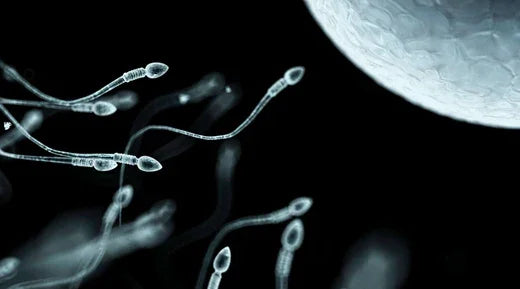
Understanding Sperm Morphology: The Unsung Hero of Fertility Treatments and Cryopreservation
Share
When it comes to the world of fertility, there's a lot of talk about numbers. We often hear about sperm count and motility, but there's another key player that's equally important and often overlooked—sperm morphology. So, what is sperm morphology, and why is it such a big deal in the realm of fertility treatments and cryopreservation? Let’s dive in!
What is Sperm Morphology?
Sperm morphology refers to the size and shape of sperm. It’s like judging a beauty contest, but for microscopic swimmers. A sperm’s structure is crucial because it can impact its ability to swim properly and ultimately fertilize an egg.
A typical sperm has:
- A smooth, oval head that contains genetic material.
- An acrosome, which is a cap-like structure that helps the sperm penetrate the egg.
- A midpiece packed with mitochondria to fuel its journey.
- A long, whip-like tail that propels it forward.
Abnormalities in any of these parts can affect the sperm’s performance. For instance, a sperm with a misshapen head might have trouble penetrating the egg, while one with a short or crooked tail might struggle to swim effectively.
Why Sperm Morphology Matters in Fertility Treatments
When couples face fertility issues, one of the first steps is a semen analysis, which looks at several factors, including sperm count, motility, and morphology. Here's why morphology is such a vital part of the equation:
-
Fertilization Capability: Sperm with normal morphology are better equipped to navigate the female reproductive tract and penetrate the egg. Abnormally shaped sperm might not make it past the cervical mucus or could struggle to bind and fuse with the egg.
-
IVF and ICSI Success Rates: In vitro fertilization (IVF) and intracytoplasmic sperm injection (ICSI) are common fertility treatments. With ICSI, a single sperm is injected directly into an egg. Choosing sperm with normal morphology can increase the chances of successful fertilization and healthy embryo development.
-
Embryo Quality: The quality of the sperm can influence the quality of the embryo. Poor morphology can lead to poor embryo development, reducing the chances of implantation and successful pregnancy.
The Role of Sperm Morphology in Cryopreservation
Cryopreservation, or sperm freezing, is a valuable tool for men who want to preserve their fertility. Whether due to medical treatments, lifestyle choices, or career planning, freezing sperm can offer peace of mind. But how does sperm morphology fit into this?
-
Selection of Healthy Sperm: Before freezing, a thorough semen analysis helps in selecting the healthiest sperm with the best morphology. This ensures that when the sperm is thawed, it's in the best possible condition for fertilization.
-
Longevity and Viability: Sperm with normal morphology are more likely to survive the freezing and thawing process. Abnormal sperm might not withstand the stress of cryopreservation as well, reducing their viability when needed.
-
Future Fertility Treatments: When using frozen sperm for future fertility treatments, the morphology still matters. Good morphology increases the chances of successful IVF or ICSI procedures, even after the sperm has been stored for years.
Improving Sperm Morphology
While some factors affecting sperm morphology are beyond control, lifestyle changes can make a positive impact:
- Healthy Diet: Foods rich in antioxidants, vitamins, and minerals support sperm health. Think fruits, vegetables, nuts, and whole grains.
- Regular Exercise: Physical activity improves overall health and can boost sperm quality.
- Avoiding Toxins: Reducing exposure to harmful chemicals, smoking, and excessive alcohol can improve sperm morphology.
- Managing Stress: Chronic stress can negatively impact sperm quality. Finding ways to relax and manage stress is beneficial.
Final Thoughts
Sperm morphology might not get as much attention as count or motility, but it’s a critical factor in the fertility journey. Understanding its importance can help couples make informed decisions about fertility treatments and cryopreservation.
So, whether you're just starting to explore fertility options or considering sperm freezing, remember—sometimes, it’s the shape that counts!


